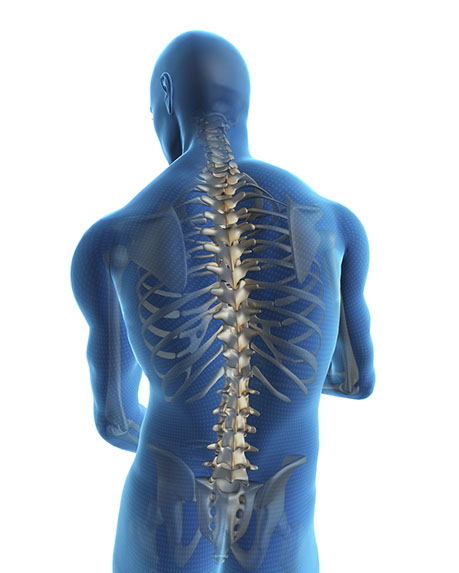
The spine is made of 33 individual bones stacked one on top of the other. This spinal column provides the main support for your body, allowing you to stand upright, bend, and twist while protecting the spinal cord from injury. Strong muscles and bones, flexible tendons and ligaments, and sensitive nerves contribute to a healthy spine. Yet, any of these structures affected by strain, injury, or disease can cause pain.
Your spine is made up of three segments. When viewed from the side, these segments form three natural curves. The “c-shaped” curves of the neck (cervical spine) and lower back (lumbar spine) are called lordosis. The “reverse c-shaped” curve of the chest (thoracic spine) is called kyphosis.
These curves are important to balance and they help us to stand upright. If anyone of the curves becomes too large or small, it becomes difficult to stand up straight and our posture appears abnormal.
Abnormal curvatures of the spine are also referred to as spinal deformity. These types of conditions include kyphosis of the thoracic spine (“hunchback”) and lordosis of the lumbar spine (“swayback”).
Scoliosis is another type of spinal deformity. When viewing the spine from the front or back, scoliosis is a sideways curvature that makes the spine look more like an “S” or a “C” than a straight “I.”

The cervical spine is made up of seven small vertebrae that begin at the base of the skull and end at the upper chest. The thoracic spine is made up of 12 vertebrae that start from the upper chest to the middle back and connect to the rib cage. The lumbar vertebra consists of five larger vertebrae. These vertebrae are larger because they carry more of your body’s weight.
The main function of the cervical spine is to support the weight of the head (about 10 pounds). The seven cervical vertebrae are numbered C1 to C7. The neck has the greatest range of motion because of two specialized vertebrae that connect to the skull. The first vertebra (C1) is the ring-shaped atlas that connects directly to the skull. This joint allows for the nodding or “yes” motion of the head. The second vertebra (C2) is the peg-shaped axis, which has a projection called the odontoid, that the atlas pivots around. This joint allows for the side-to-side or “no” motion of the head.
The main function of the thoracic spine is to hold the rib cage and protect the heart and lungs. The twelve thoracic vertebrae are numbered T1 to T12. The range of motion in the thoracic spine is limited.
The main function of the lumbar spine is to bear the weight of the body. The five lumbar vertebrae are numbered L1 to L5. These vertebrae are much larger in size to absorb the stress of lifting and carrying heavy objects.
The main function of the sacrum is to connect the spine to the hip bones (iliac). There are five sacral vertebrae, which are fused together. Together with the iliac bones, they form a ring called the pelvic girdle.
The four fused bones of the coccyx or tail-bone provide attachment for ligaments and muscles of the pelvic floor.
***We Promise, no spam!
Andhra Pradesh Most Advanced Neuro Treatment
Services,At Sri Padmavathi Multi-Specialty Hospital
providing the latestand most advanced treatment
modalities.
© 2021, Sri Padmavathi Hospital. All Rights Reserved.